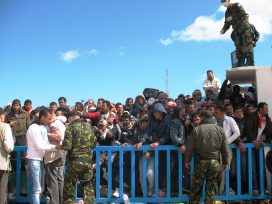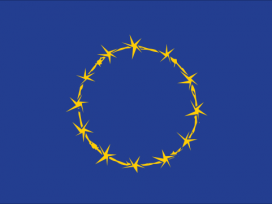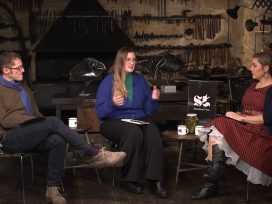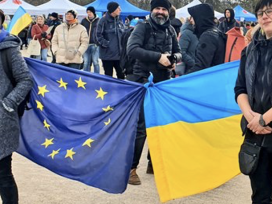Sitting in the sunshine, little Joud Mustafa is playing “Subway Surfer” on her father’s iPad. Such an uncomfortable journey on the crowded and dirty deck of a fishing-boat is infinitely boring for a three-year-old. Finally, Joud falls asleep in her mother’s arms, totally exhausted. There’s been nothing to eat for the past two days. The passengers on board, numbering between 480 and 500 in total, have even run out of drinking water. But then they begin to share, by way of whispering to one another, some good news: the Italian Coast Guard’s Operations Unit has answered the rescue call that a doctor on board conveyed with his satellite telephone. Many of them express their thanks to God and the Italian people. It’s 12:26 pm on Friday 11 October 2013. The countdown involving protocol and red-tape begins, which will end up killing Joud and her mother in around five hours’ time – together with between sixty and one-hundred children, their families and dozens of Syrian youngsters who believed they were about to find safety in Europe. It’s a chilling set of numbers: at least 268 drowned at sea, 212 survivors. (These figures differ considerably from the official sources: I have counted the number of all those missing at sea, collecting news from relatives in the Middle East or in Europe, as well as relatives on board the ship and other survivors.)
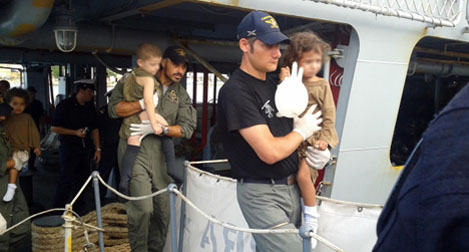
And the final, unacceptably bitter irony: the ship named Libra belonging to the Italian Navy was very close to those refugees – just beyond the horizon, between 27 and 10 miles away. That’s less than an hour. But for a long time, too long, neither Italian nor Maltese authorities requested its intervention.
The Libra patrol boat has a large deck, a helicopter on board and expert sailors able to provide all the refugees with support. Its commander, young Lieutenant Catia Pellegrino, is an icon of the Italian Navy. The sinking fishing-boat is certainly visible on the ship’s radar screen, being such a short distance away. But no one gives any orders; no one takes any decisions that might still save 268 lives. The Libra is allowed to reach the spot only at 17:14. At that time, the children’s ship has already capsized seven minutes earlier; the sea is an expanse of living and dead people. The delay also drastically reduces the length of time during which the search can be conducted in daylight. Once darkness sets in, those floating in the water risk not being seen by rescuers and left to drift away towards a cruel death of hardship, freezing cold and starvation. This is perhaps the reason why some Syrians swear they noticed children and adults hanging onto driftwood from the fishing-boat, but then didn’t find them amongst the survivors who were taken to safety on land.
The Operations Unit that received the first call for rescue, the one that might have changed the course of events, is known. It is the Coordination Centre of Rome belonging to the General Command of Harbour Master Authorities, a Navy section within the Ministry of Transport upon which coast guard activities depend. The vessel loaded with Syrian refugees sinks 113 kilometres away from Lampedusa and 218 from kilometres from Malta. The cause of the disaster: the excessive number of passengers obliged to get on board by two brothers named Khaled and Mohamed (ruthless traffickers from the Zuwara port in Libya), in addition to rounds of machine-gun fire that were shot the previous night from a Libyan patrol boat and ended up piercing the fishing-boat’s hull. Cause of the delay in rescue operations: passing the buck between Italy and Malta during search and rescue procedures, a cause that has led to dead and missing persons in the past too. The chronological reconstruction of events for this article was made possible by analysing data from nearly 13,000 positions of ships in transit that day: their coordinates, speed and direction, from 11:00 in the morning until midnight. A laboratory in the UK has extracted the emergency numbers stored on one of the telephones fished out of the sea. In addition to geographical and scientific data, there’s the eye-witness report provided by Admiral Felicio Angrisano (Commanding General of the Harbour Authorities Corps and of the Coast Guard) and the reports given by some Italian Navy officers.
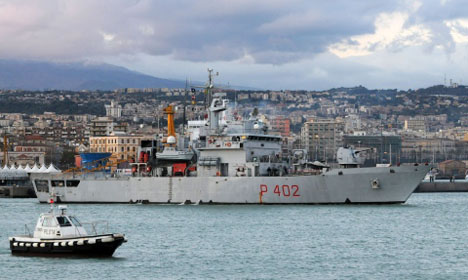
The Italian patrol boat, belonging to the Italian Navy, which was only one hour away from the refugees’ boat.
The point of no return in the tragedy occurs at 13:00 that day: at which time, the Italian Operations Centre could still have saved the children and the other passengers. But it refrains from direct intervention and passes the rescue call on to its colleagues in Malta. Despite the fact that the distance between the boat full of children and Malta is double that between the boat and Lampedusa. A decision which Admiral Angrisano explains in a written report as follows: “The sequence of events described accords with criteria for international conduct specifically outlined in the Hamburg Rules, which invest each State with the responsibility for coordinating search and rescue operations in defined and declared areas.” Thus the surviving mothers and fathers who lost the rest of their family at sea have been informed that their children, their loved ones, perished in compliance with the Hamburg Rules, namely the agreement that since 1979 has entrusted the Ministry of Transport with the responsibility for sea rescue operations.
The Commanding General of the Italian Coast Guard confirms the testimony provided by Mohanad Jammo. Their accounts diverge on only one point. Jammo, head physician in the Intensive Care Unit of a hospital in Aleppo (Syria), lost his six-year-old and nine-month-old children during the shipwreck. He’s the one who speaks with the Rescue Coordination Centre in Rome using a telephone on board the fishing-boat. He calls upon the request of the scafista (people trafficker), who lends Jammo his Thuraya mobile satellite telephone. Jammo calls Italy simply because the screens of three different GPS instruments on board report that Lampedusa is just a little over one-hundred kilometres away. And that Malta is more than two-hundred kilometres away. Logic and common sense make this an obvious choice. One-hundred kilometres can be covered in two hours by Coast Guard patrol boats and slightly more than an hour and a half by the faster patrol boats belonging to the Guardia di Finanza Corps stationed in Lampedusa that day, in response to the shipwreck of Eritrean refugees that took place eight days earlier. “I called the same Italian telephone number three times”, says Mohanad Jammo: “at about eleven o’clock in the morning, then at 12:30 pm and slightly before one o’clock in the afternoon”. Jammo’s words are confirmed by two further surviving physicians: Ayman Mustafa (38), surgeon, the father of Joud, who is now officially lost at sea along with his mother Fatena (27); and by Mazen Dahhan (36), neurosurgeon, who lost his wife Reem (30) and their three children.

Three-year-old Joud Mustafa, lost at sea along with her mother Fatena Khatib.
The only thing that Admiral Angrisano denies is the 11:00 am telephone call. All of the rest is confirmed. “At 12:26 pm”, he says, “a telephone call reaches the Operations Centre from a satellite telephone, but the line is bad to the point of being unintelligible at times. After five minutes of attempting to communicate, the telephone line is cut off. My previous experience guides me in getting in touch with the Thuraya network provider whose premises are in the United Arab Emirates, as I have already done hundreds of times for similar cases”.
Eight minutes after the end of the first conversation, Jammo calls again. It’s 12:39 pm and the telephone call continues until 12:56. The voice is more intelligible: “So much so as to allow us to acquire some details as to the number and nationality of the people on board, place of departure, the presence of two children in need of treatment, and finally the position of the vessel whose engine had broken down and was shipping water”, adds Angrisano.
So the Operations Centre in Rome knows that there are refugees on board, that there are children and wounded and that the fishing-boat is sinking. Even ignoring the 11:00 am telephone call, which is in any case confirmed by Mohanad Jammo, at 13:00 they still have enough time to dispatch some patrol boats from Lampedusa. And, calculating their speed, they could reach the destination between 14:30 and 15:00. Namely, at least two hours before the slaughter takes place. Then there’s the Libra and further away, at a distance of 96 kilometres, the Espero. These two military ships are in the area to protect Italian fishing-boats from Libyan attacks. In other words, Maltese patrol boats would have to travel double the distance compared to the two patrol boats belonging to the Italian Navy. And compared to the vessels still in Lampedusa, which are mostly anchored in the port that afternoon. Yet the Operations Centre in Rome passes the rescue call on to Malta at 13:00.
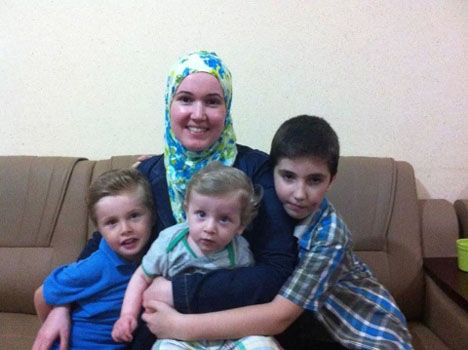
Reem Dahhan (30), lost at sea with his sons Tarek (4), Bisher (1) and Mohamed (9).
When the Italian Coast Guard announces its decisions to Mohanad Jammo, he begs them: “Please, we’re about to die”. And the military tells him over the telephone: “Please call the Maltese authorities. I’ll give you the number: it’s 00356…”.
“If you listen to the recording”, recalls Jammo, “you’ll hear that he didn’t even give me enough time. He hung up before I finished writing the number down”. This invitation to get directly in touch with Malta, explains Admiral Angrisano, “is in compliance with a clear, tested and constructive method that through direct contact between those who ask for help and those who are obliged to provide assistance produces more effective and productive rescue operations”. Everyone on board is terrified. The lower deck is completely flooded. Passengers begin to climb up to the main deck and then up onto the top deck. Mazen Dahhan gets hold of his children Mohamed (9), Tarek (4) and little Bisher (1) and then passes them up to Ayman Mustafa who gets them to sit on the dry floor. Little Joud is still asleep, hugging onto her mother.
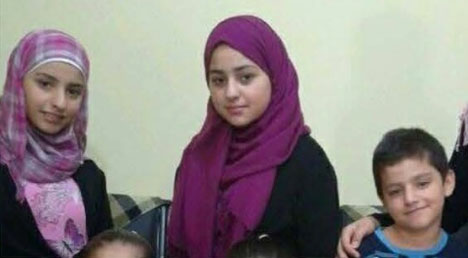
Kenda Awad (12), lost at sea with her sister Marwa (14) and her brother Aldin (9).
Even Jammo’s eldest son Mohamad (6) is sleeping in the sunshine. He opens his eyes for an instant and watches his father standing on the roof of the control cabin, whose voice gets more and more desperate as he continues to call Malta over a satellite phone. Their eyes meet for a fleeting moment. His father gives Mohamad the thumbs-up. The little boy smiles at him and then goes back to sleep. That is the last time they gaze upon each other.
“The vessel is in waters belonging to Malta’s jurisdiction”, insists Admiral Felicio Angrisano in his written report. “That Coordination Centre is therefore summoned at one o’clock by the Coast Guard Operations Centre, informing them that it has also identified two merchant ships in the area, closer to the migrants’ boat, at a distance of 25 and 70 miles respectively”. At 13:05, the Maltese authorities, according to the Commander of the Coast Guard, take over the management of rescue and emergency operations. Again, according to Admiral Angrisano: “In the meantime, according to the Chief Command of the Navy squadron, even the Libra with helicopter on board heads in that direction”. But there’s something that doesn’t add up.
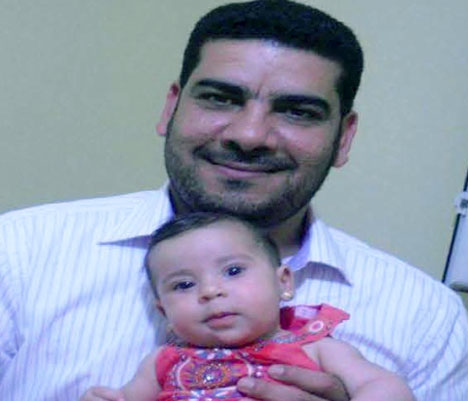
Mnawer Raheel (35), lost at sea and his 9-month-old daughter.
According to the Italian Navy, at 13:34 the Libra is only 27 miles away from the spot where the rescue call was made. That’s 50 kilometres. Given the ship’s top speed of 20 knots (37 kilometres per hour) and the calm seas, Libra could have reached the refugees in an hour and a half. Namely, already at three o’clock in the afternoon. Instead, it only gets there at 18:00: because only after the children’s boat sinks do Maltese coordinators ask the Operations Centre in Rome for Italian assistance. At 17:14, when it finally receives orders to intervene, the Libra ship is still ten miles (18 kilometres) away. In other words, it’s been sailing for hours, waiting for someone to decide what must be done. Four and a half hours to travel 50 kilometres means an average speed of 11 kilometres per hour, less than 6 knots: certainly not at an emergency pace.
There’s another incredible story. At 13:34 the same afternoon, a notice to mariners from the Operations Centre in Rome is broadcast all over the world: the “hydrolant 2545” warning asks all ships in transit to help out the fishing-boat if possible. This was discovered by Charles Heller, researcher at Goldsmiths college, University of London, and one of the founders of the watchthemed.net project. Ships in transit. And not the Libra. Why? Coast Guard command: “The authorities who, according to the Hamburg Rules, assume the administration and coordination of rescue activities, decide upon the timing, methods and even eventual requests for cooperation.” In other words, it’s the fault of those in Malta who forget to engage the Libra in rescue activities. Maltese Armed Forces still have yet to provide explanations.
At 16:22, authorities in Malta inform Rome that one of their aircrafts has identified the fishing-boat adrift. At 17:07, once again from Valletta, they transmit a bulletin saying that the boat has capsized and ask Italy for help.
The first rescue boat, namely the Maltese P61 patrol boat, reaches the site only at 17:51. It is joined by Libra at around 18:00. In the meantime, patrol boats CP301 and CP301 are dispatched from Lampedusa, together with two fast patrol boats belonging to the Guardia di Finanza Corps. Exactly what Jammo, using his common sense, had been begging for during the course of the last six hours.
